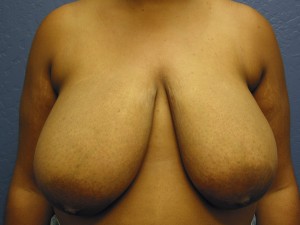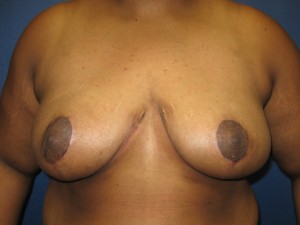When it comes to breast reduction surgery, I find that women contemplating this procedure don’t usually place the appearance of the final scar at the top of their list of concerns. This is quite the opposite for those considering a mastopexy (breast lift) where this is a major area of concern.
Why is this the case despite the fact that the incisions, usually anchor shaped, are often identical?
The reason is that women who are seeking breast reduction surgery are doing so because of the annoying and even debilitating effects that their massively enlarged breasts are having on them and their quality of life. Women seeking a mastopexy are doing so largely for aesthetic reasons.
Does this mean that the appearance of the scars is relatively unimportant?
Of course not!
I am just as diligent and meticulous in the repair of breast reduction incisions as I am with the mastopexy ones (as well as for all incisions for all procedures). These are closed using long acting deep sutures in a multilayered repair that avoids the unnecessary and displeasing rail-road track suture marks in the skin. Skin tapes are applied for additional wound support and security and may be used for a total of two to three weeks. At that point in time, my patients will usually begin applying a topical silicone gel to help the scars heal as ideally and inconspicuously as possible. This is usually continued for several months. For patients at higher risk for developing hypertrophic scars or keloids or showing early evidence of their manifestation, silicone gel sheets are used to aggressively deal with these issues.
Most breast reduction scars heal very well, usually as fine lines, and are quite acceptable. It is rare in my experience to see keloids develop in darker complected women.
If you would like more information on a breast reduction surgery or on any other plastic surgery procedure that I perform or to schedule a consultation with me, please call my office at 480-451-3000.
Steven H. Turkeltaub, M.D. P.C.
Scottsdale and Phoenix, Arizona




